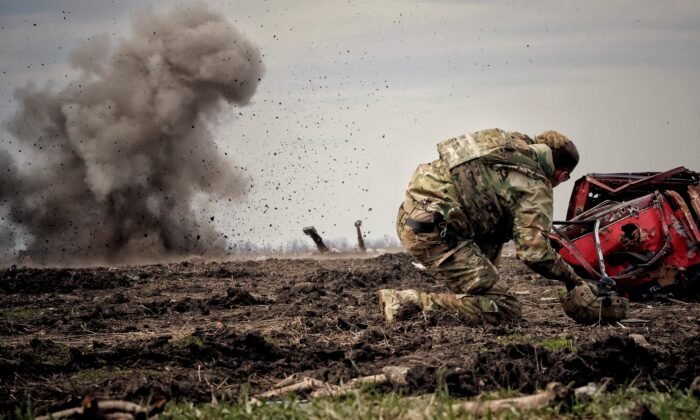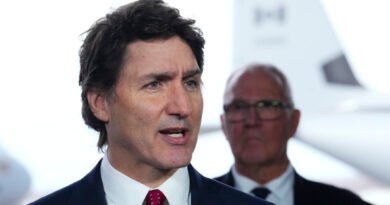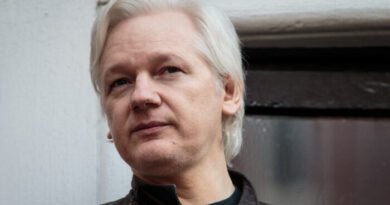Ukraine’s Intentions in Kursk: A Strategic Move or a Risky Gamble?
It’s been three weeks since Ukrainian troops entered Russia’s Kursk region in force, but many questions remain unanswered about its strategic aims and impact.
Analysis
Kyiv’s ongoing offensive in Russia’s Kursk region, now in its fourth week, has been hailed in the West as a potential game changer by bringing the war to Russia’s doorstep.
But while Ukrainian forces have managed to establish control over a thin strip of Russian territory, the operation’s strategic objectives remain ambiguous.
According to Andrew Corbett, a lecturer at the Defense Studies Department at King’s College London, the offensive’s main aim was to force Moscow to pull troops and equipment from the eastern front.
“Tactically, the size and speed of the operation suggest it is designed to present dilemmas to the Russian commanders,” Corbett told The Epoch Times.
“Do they reinforce forces in Kursk or focus on offensive operations further south?”
More than three weeks into the offensive, few observers dispute that Kyiv’s offensive has caused a headache for Russian President Vladimir Putin.
Despite fierce Russian counterattacks, Ukrainian forces have established control over more than 450 square miles of territory—according to Kyiv—and scores of border settlements.
Meanwhile, tens of thousands of civilians have been evacuated from Kursk and from the neighboring Briansk and Belgorod regions due to continued Ukrainian attacks.
“The strategic impact is likely to be negative for the Putin regime,” Corbett said, “given that Russia has been invaded and the response has been anything but decisive.”
Although Moscow disputes the extent of Kyiv’s territorial gains, Russian forces appear to have been unable—so far—to eject the invaders from Kursk.
“Ukrainian troops [in Kursk] are actively digging in and building defensive lines,” Apty Alaudinov, a top Russian Defense Ministry official, told Russia’s TASS news agency on Aug. 29.
According to Abdullah Agar, a Turkish military expert and former Special Forces officer, Kyiv’s offensive has sought to undermine Putin by making him appear unable to defend Russian territory.
“If Putin is perceived as being unable to protect Russia’s borders … this will create serious problems for him,” Agar told The Epoch Times.
“That’s why Russia’s coming response [to the offensive] will be critical,” he said.
Moving Targets
On Aug. 6, hundreds of Ukrainian troops, backed by tanks and artillery, poured into Kursk from Ukraine’s northeastern Sumy region.
Approximately 18,500 square miles in size, Kursk shares a roughly 150-mile-long border with northeastern Ukraine.
On the offensive’s second day, Kyiv claimed its forces had wrested control of Sudzha, a key energy hub located six miles east of the border.
Yet despite these initial gains, the operation’s objectives have remained vague from the outset—even among Western officials.
“I will leave it to them [the Ukrainians] to speak to … what their goals are,” a State Department spokesman said on Aug. 7—a day after Kyiv launched the offensive.
On the same day, White House press secretary Karine Jean-Pierre said that Washington sought clarification from Kyiv “to learn more about their objectives” in Kursk.
On Aug. 8, Myhailo Podolyak, a top Ukrainian presidential adviser, provided some insight, saying the offensive was meant to strengthen Kyiv’s position in advance of possible ceasefire talks.
…
Disquiet on the Eastern Front
Kyiv’s offensive has coincided with a relentless Russian advance in the Donbas region, where Moscow’s forces are currently poised to capture the strategic town of Pokrovsk.
Some voices in the Western media have suggested that the offensive was a strategic mistake, since it served to divert Ukraine’s limited resources away from the primary theater in Donbas.
“Ukraine’s invasion [of Kursk] was a major strategic blunder, which will accelerate its defeat,” John Mearsheimer, a prominent American geopolitical analyst, wrote in Responsible Statecraft on Aug. 15.
“Kyiv removed top-notch combat units from the front lines in eastern Ukraine—where they are desperately needed—and made them part of the Kursk strike force,” Mearsheimer said.
According to Sergei Markov, a former Putin spokesman and former member of Russia’s State Duma (parliament), Kyiv has moved roughly 20,000 troops from Donbas to Kursk—and to Ukraine’s Sumy region—since the offensive began.
“There is a consensus among military experts that [Ukrainian President Volodymyr] Zelenskyy sent troops to Kursk with unrealistic goals,” Markov told The Epoch Times.
“This is one of the reasons for the current failure of the Ukrainian army in Donbas.”
Markov went on to assert that Russian troops, too, had been transferred to Kursk from the eastern front.
“But not as many as Zelenskyy expected,” he said.
Asked how—and when—he believed the offensive would end, Markov said Kursk would likely remain the scene of “heavy fighting” in coming months, “but there will be no big territorial changes.”
“A few villages will remain under Ukrainian control,” he said, “but before any peace deal [can be reached], Ukrainian forces will be pushed out of Kursk by the coming Russian counter-offensive.”
Corbett expressed a similar view.
“I would not be at all surprised if we see Ukrainian forces withdraw if a large Russian counterattack is in the offing,” he said.
“But a similar swift thrust [by Ukrainian forces] might be expected shortly afterward elsewhere, compounding Russian commanders’ problems.”




